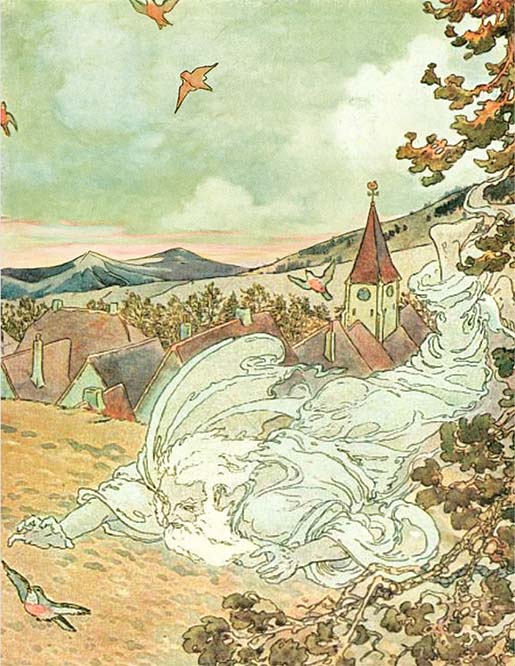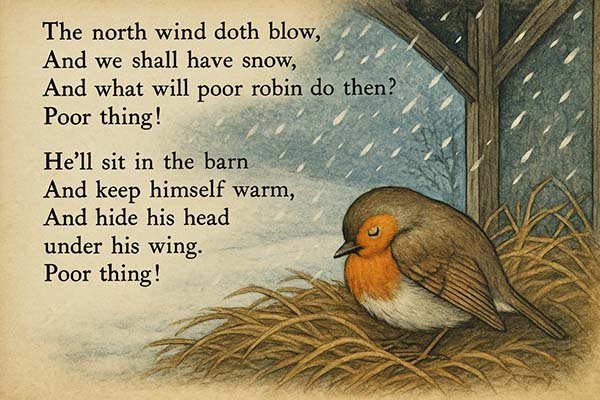The North Wind Doth Blow
The north wind doth blow,
And we shall have snow,
And what will poor robin do then?
Poor thing!
He'll sit in the barn
And keep himself warm,
And hide his head under his wing.
Poor thing!

The North Wind Doth Blow first appeared in printed nursery collections of the early 1800s, though its style suggests it was in oral use long before. The old-fashioned phrase “doth blow” points to an earlier form of English, which may place the rhyme’s beginnings in the 17th or 18th century.
It was included by James Orchard Halliwell in his mid-19th-century Nursery Rhymes of England and quickly became a staple of Victorian children’s books. Unlike many verses that traveled as jokes or riddles, this one likely began as a simple observation of winter weather, with the robin standing in for all creatures trying to survive the cold.
Meaning
At its heart, the rhyme is about empathy. The north wind signals snow, and instead of celebrating it, the speaker worries about a small bird. What will poor robin do when the weather turns harsh? The answer is modest: he’ll tuck himself away in a barn and hide his head under his wing. The repeated “Poor thing!” makes the listener feel compassion.
Children hearing this rhyme were encouraged to think beyond themselves — to imagine the needs of animals in winter. It’s not a puzzle, not a satire, but a miniature lesson in kindness.
Variants
The most common version speaks only of the robin, but later editors expanded it. Some added verses about other creatures — the dormouse curling up to sleep, flowers drooping, or bees staying in their hive. These extra lines turned the rhyme into a short nature lesson about how different beings cope with the seasons.
Even within the robin’s verse, words vary. Some books say he will “hop into the barn,” others that he will “creep.” A few change the setting to hedges or haystacks, but the image of the bird tucking its head under its wing remains constant.
The rhyme’s focus on the robin makes perfect sense in Britain. Unlike swallows or cuckoos, robins don’t fly south for winter. They stay put, bright against the snow, and people have long seen them as the bird of the cold months. By the Victorian period, the robin had already perched on countless Christmas cards, carrying connotations of warmth and courage in bleak weather. Teaching children to pity “poor robin” was a way of folding kindness and empathy into everyday verse.
